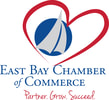|
The U.S. Department of Energy (DOE) announced today that Sea Potential is among the nine teams that have been named finalists in the Wave Energy Prize—a 20-month design-build-test competition—and will proceed to the next phase of the competition.
Sea Potential is the first “Enterprise-in-Residence” for Tinker|Bristol, the nonprofit manufacturing incubator and makerspace in Bristol, RI., whose Steering Committee mobilized its network of affiliates at Roger Williams University and the marine manufacturing community to advise the project team. Sea Potential will be designing and building the 1/20th scale model in the Tinker|Bristol makerspace in the historic Bristol Industrial Park in Bristol, RI. for the final round of the Wave Energy Prize this spring, The nine finalists and two alternates, identified from the 17 official qualified teams (out of 97 contestants), will continue their quest to double the energy captured from ocean waves and win a prize purse totaling more than $2 million. Each of the finalists and alternates will receive seed funding from DOE to develop 1/20th scale models of their wave energy converter (WEC). These models will be tested at the nation's most advanced wave-making facility, the Naval Surface Warfare Center's Maneuvering and Seakeeping (MASK) Basin at Carderock, Md., beginning in summer of 2016. “The Sea Potential team’s research into new designs for wave energy converters has focused on addressing the major challenge facing the emergence of a viable wave energy industry – how to produce more electricity at a lower cost, “ said team leader, Tim MacDonald. “The Wave Energy Prize (WEP) competition provides the opportunity to prove the new DUO design against alternative concepts. The competition offers a clear and transparent bench-marking process that will give confidence to potential investors that the world’s abundant offshore wave energy resources can be harvested in a commercially competitive manner.” “The qualified teams’ efforts resulted in some very promising technologies for the judges to evaluate,” said Wes Scharmen, principal investigator at Ricardo, Inc. and chief judge of the Wave Energy Prize. “Based on our preliminary evaluation, the data indicates that many of the teams identified as finalists have the potential to achieve the ACE threshold, and thus the potential to exceed DOE’s program goal. We’re looking forward to further verifying their designs performance at 1/20th scale in the MASK Basin at Carderock this summer.” ACE—a benefit-to-cost ratio—was selected by the Wave Energy Prize as a metric appropriate for comparing low Technology Readiness Level WEC concepts when there is not enough data to calculate the levelized cost of energy—itself a cost-to-benefit ratio—from a device. ACE is determined by dividing the wave energy extraction efficiency of a WEC by its structural cost. Finalists were determined based on their potential to achieve the doubling of the current state-of-the-art ACE value of 1.5 meters per million dollars (m/$M) to 3 m/$M during 1/20th scale tank testing at the MASK Basin, making them eligible to win the grand prize. A panel of expert judges evaluated each qualified team based on their revised technical submissions, numerical modeling results, Model Design and Construction Plans, and the results of small-scale tank testing of their 1/50th scale models, and determined aggregate scores to identify the finalist pool. The Wave Energy Prize is encouraging the development of game-changing WECs that will reduce the cost of wave energy, making it more competitive with traditional energy solutions. To follow the progress of the Wave Energy Prize or for more information, go to waveenergyprize.org. About Sea Potential Sea Potential is a partnership between North Ireland wave energy specialist Pure Marine and RCV Bradenten LLC to design, build, test and deploy the DUO wave energy technology. The DUO Wave Energy Converter concept was conceived to develop wave energy technology that could improve productivity, leading to lower costs of generating electricity and accelerating the deployment of wave energy technology on offshore sites. The DUO is an axisymmetric wave energy converter that extracts energy from both the vertical and rotary motion of offshore waves, which has significant advantages in terms of productivity. Sea Potential will be incubated at Tinker|Bristol, Rhode Island’s manufacturing incubator and makerspace. For more information about Sea Potential, go to www.seapotential.com. About Tinker|Bristol Tinker|Bristol is a nonprofit manufacturing incubator and makerspace located in the historic Bristol Industrial Park in downtown, Bristol, RI. It offers affordable access to shared manufacturing space, OSHEAN’s high-speed fiber-optic network, a complete tool and workshop area, rapid prototyping equipment including 3-D printers, and entrepreneurial development services. Tinker facilitates the hands-on innovation of products, manufacturing processes, materials and technologies. Its pioneering approach streamlines the pathway from ideation to adoption by facilitating cross-disciplinary collaboration. Tinker|Bristol breaks through barriers to job growth by uniquely harnessing the Ocean State’s distinctive assets, at the grass roots level, in the collaborative environment of a makerspace. For more information about Tinker|Bristol, go to www.tinkerbristol.org.
0 Comments
Leave a Reply. |
Archives
July 2024
Categories
All
|

 RSS Feed
RSS Feed